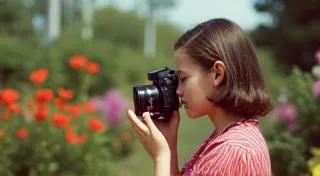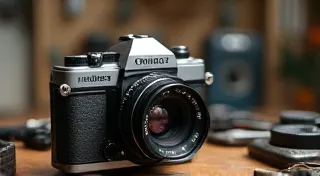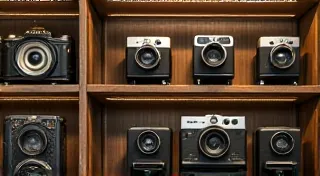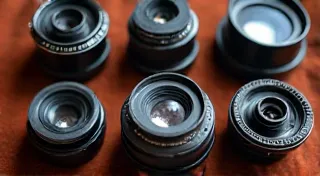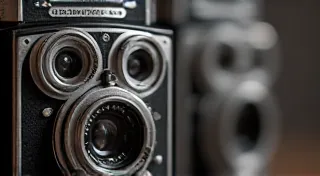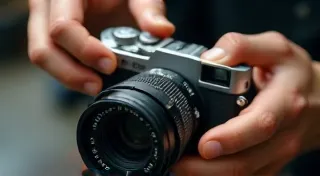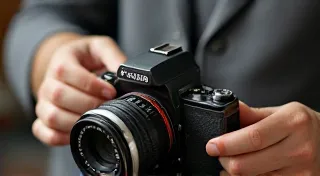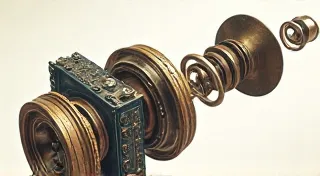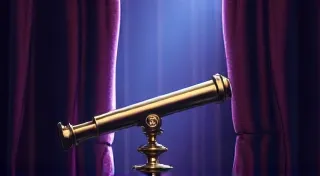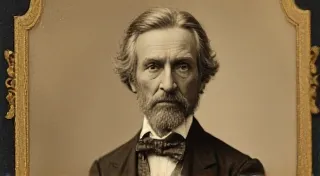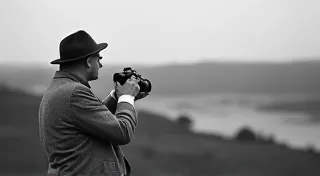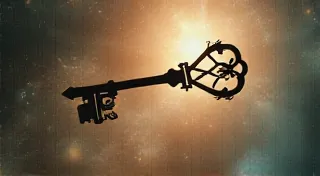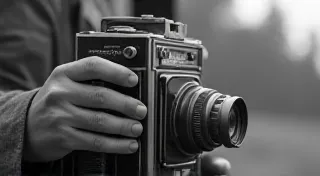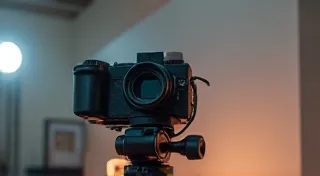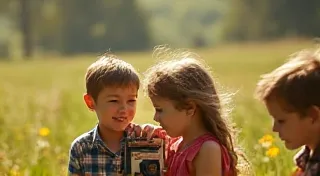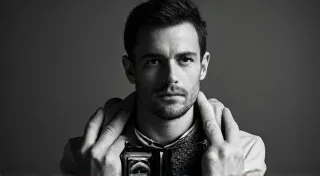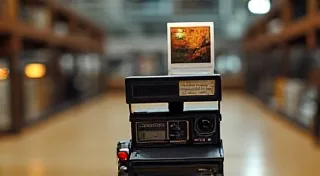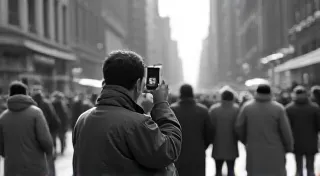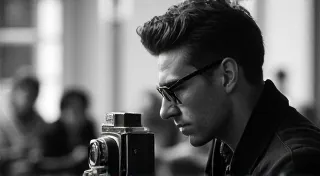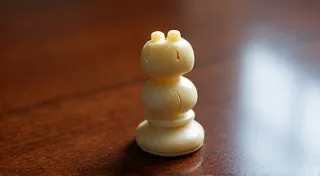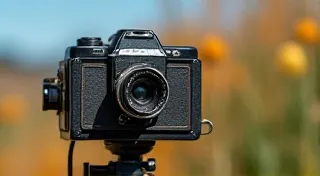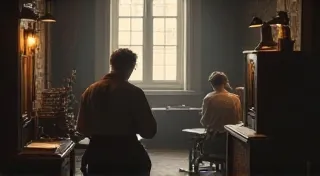The History and Care of Antique Cameras: A Collector's Guide
Welcome to a comprehensive journey through the captivating world of antique cameras! This site is dedicated to exploring the rich photography history, the art of camera collecting, and the rewarding challenge of preserving these incredible artifacts. Whether you’re a seasoned collector, an aspiring enthusiast, or simply curious about the evolution of photographic technology, you're in the right place. We'll delve into the intricate narratives behind these machines, offering insights into their mechanics, their historical significance, and, most importantly, how to care for them so they can be enjoyed and appreciated for generations to come. This isn’t just about owning a piece of history; it’s about understanding the craftsmanship, innovation, and artistry that shaped the photographic landscape.
More than just objects, antique cameras are tangible links to a bygone era, reflecting social changes, technological advancements, and artistic expressions of their time. Camera collecting has evolved from a niche hobby to a vibrant community, driven by a desire to own and preserve these invaluable pieces of mechanical history. The term encompasses a broad range of cameras, from the earliest photographic processes to the iconic models that defined the 20th century. This guide aims to equip you with the knowledge and resources to navigate this fascinating field, whether you've just acquired your first antique camera or are seeking to expand your existing collection. We’re here to unravel the mysteries, celebrate the artistry, and provide practical advice on how to care for these remarkable treasures. The pursuit of finding rare and well-preserved collectible cameras is truly a thrilling adventure!
Early Innovations & The Dawn of Photography: A Technological Revolution
Before we delve into specific models and collecting strategies, let's briefly explore the foundational technologies that underpin the entire field of antique cameras. The invention of photography itself was a watershed moment in human history, fundamentally altering how we perceive and document the world around us. Prior to the advent of photography, capturing images was a laborious and often imprecise process, reliant on artistic skill and lengthy execution times. The desire to accurately and permanently record visual information spurred relentless experimentation, leading to groundbreaking discoveries in optics, chemistry, and mechanics.
The initial struggles to consistently capture images led to a period of intense experimentation with various chemical processes. Pioneers like Nicéphore Niépce, Louis Daguerre, and William Henry Fox Talbot tirelessly pursued techniques to fix the fleeting image captured by a camera obscura. Niépce’s heliograph, dating back to the 1820s, is considered the earliest surviving photograph, though it required an incredibly long exposure time. Daguerre's daguerreotype process, introduced in 1839, offered significantly improved image quality and reduced exposure times, quickly gaining popularity. Talbot’s calotype process, which produced a negative from which multiple prints could be made, laid the groundwork for modern photographic techniques.
Think of the painstaking work involved in the Wet Plate Collodion process, introduced in the 1850s. This process, while offering superior image clarity compared to earlier methods, was notoriously complex and required photographers to prepare, expose, and develop the plates immediately, often in portable darkrooms. Imagine the challenges faced by early photographers traveling to remote locations, carrying all the necessary equipment and chemicals! This process highlights the dedication and ingenuity of those early pioneers.
The Rise of Mass-Produced Cameras and the Evolution of Photography
The mid-19th century witnessed a gradual shift towards mass-produced cameras, making photography more accessible to a wider audience. The introduction of the gelatin dry plate in the 1870s revolutionized the photographic process, eliminating the need for on-the-spot development and significantly simplifying the process. This allowed for greater portability and convenience, fueling the growth of amateur photography.
The Rise of 35mm cameras in the early 20th century marked a particularly transformative period. The Leica I, introduced in 1925, ushered in a new era of compact, high-quality cameras, appealing to photojournalists and enthusiasts alike. The smaller format allowed for greater agility and a more candid approach to photography. This innovation fundamentally changed the way photographers interacted with their subjects and captured the world around them.
The interwar years and the post-war boom saw a proliferation of camera models, each vying for market share and catering to different photographic needs. Companies like Kodak, Rolleiflex, Hasselblad, and Nikon emerged as leading manufacturers, each contributing to the evolution of camera technology and design. The introduction of features like built-in light meters, rangefinders, and interchangeable lenses further enhanced the capabilities of these cameras.
Iconic Cameras and Their Stories: A Collector's Dream
The world of vintage cameras is brimming with iconic models, many of which become highly sought-after collectible cameras. These aren't just machines; they're pieces of history. The Kodak Brownie, bringing photography to the masses, dramatically reshaped photographic access.
The Hasselblad, renowned for its precision and quality in medium format photography, continues to be a collector's dream. The Rolleiflex, a legacy of twin-lens reflex cameras, boasts a rich history and distinctive design.
The Graflex Camera's role as a wartime hero and source of photographic innovation makes it particularly desirable. And let's not forget the unique appeal of folding cameras with their compact and convenient design.
Care and Preservation
Protecting these artifacts is paramount. Antique Camera Care: Preserving Photographic History provides essential guidance. Understanding Understanding Camera Shutters: Types and Mechanisms is critical to proper function and preservation.
The Collector's Journey
For those on a budget, Collecting Vintage Cameras on a Budget provides practical advice. Identifying Antique Camera Markings: A Collector's Guide can help decipher the stories behind these artifacts. The Common Problems with Antique Cameras & How to Fix Them section addresses typical issues. Restoring a Vintage Camera: A Step-by-Step Guide offers the chance to breathe new life into old cameras. The Silent Dialogue: How Limited Production Runs Shaped the Narrative of Early Camera Collecting explores the rarity effect. The Ghosts in the Shutter: How Lost Memories Define Collectible Cameras touches on the emotional connection to vintage cameras. And those interested in the aesthetics of the process might appreciate Chromatic Aberrations of Time: A Lens Through Which Collecting Reveals Our Changing Aesthetics.
The Famous Photographers and Their Favorite Antique Cameras page showcases how professionals have utilized these tools, and the Rangefinder Cameras and Stereo Camera pages delves into specific niche technologies.
For instant gratification enthusiasts, Polaroid Cameras offer a unique appeal.
The pursuit of finding rare and well-preserved collectible cameras is truly a thrilling adventure. This guide is intended to provide a starting point for your journey into this fascinating field. As you delve deeper into the world of antique cameras, you'll discover a rich tapestry of history, innovation, and artistry.
Further Resources
- Online Forums: Camera Collectors Forum, Photo.net
- Museums: George Eastman Museum, London Science Museum
- Books: "Collecting Antique Cameras" by Michael Freeman, "The Camera Story" by David Henley
